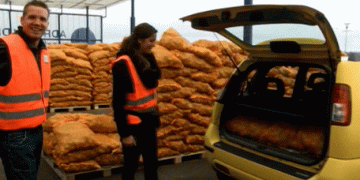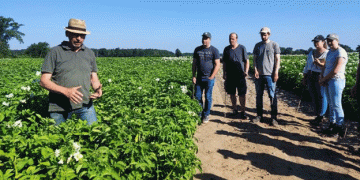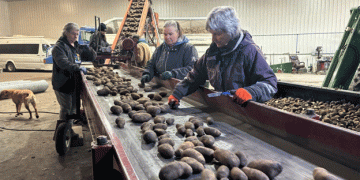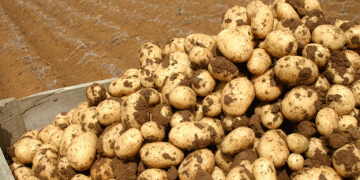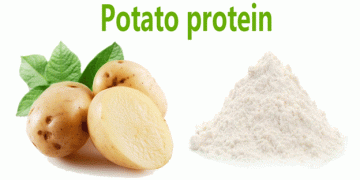Dry rot is probably the most important cause of postharvest potato losses in worldwide. Dry rot is caused by several fungal species in the genus Fusarium, thus the name Fusarium dry rot
Fusarium dry rot is characterized by an internal light to dark brown or black rot (Figure 1) of the potato tuber-and it is usually dry. The rot may develop at an injury such as a bruise or cut. The pathogen penetrates the tuber, often rotting out the centre. Extensive rotting causes the tissue to shrink and collapse, usually leaving a dark sunken area on the outside of the tuber (Figure 2) and internal cavities (Figure 3). Yellow, white, or pink mold may be present (Figure 4).
Fusarium are commonly found on seed tubers but also survive for very long periods in the soil. Seed pieces decay when the pathogens infect cut or injured surfaces or when seed tubers are infected before cutting. Tubers begin to rot either while they are being held after cutting or after they are planted. Pre-cutting seed puts the tubers at risk for Fusarium dry rot. The pathogen can move into the tuber through the cut surface and quickly rot the seed piece (Figure 5). Unfortunately, the temperature most favourable for healing the cut surface, about 55° F, is high enough to allow Fusarium to colonize the tissue. Seed decay results in poor stands and stunted plants.
Damage to tubers at harvest provides a multitude of points of entry for spores that are dormant in soil or on the surface of the tuber. If postharvest applications of a fungicide do not inhibit further development of the disease, the fungus begins to grow in the tuber tissue, causing dry rot lesions at the point of injury (Figure 6). The severity of dry rot in storage depends on the magnitude of injury. In storage the progress of the disease is limited primarily by temperature: the colder the temperature, the slower the disease will progress. Young tubers appear to have some resistance to dry rot which slows disease. Dry rot progresses noticeably faster during the last half of the storage season.
Most techniques for managing dry rot are aimed at preventing injury to the tubers, either seed or the harvested crop. Preventing bruises will greatly aid in avoiding infection. Treating seed pieces with fungicide helps control decay and other diseases caused by seedborne pathogens.
It is critical to purchase seed that has as little dry rot as possible. Seed should be inspected, preferably during the last months of storage. If this is not possible, inspect seed carefully upon receipt.
Harvest tubers after skins are set and when pulp temperature is greater than 50° F. Use ant bruise practices when harvesting and piling potatoes.
If using a postharvest fungicide, be certain that the coverage is adequate to protect the entire surface of the tuber. Use the volume of water and fungicide rate specified on the label.
Allow a period for wounds to heal before dropping the temperature in storage. There should be good air circulation, high humidity (greater than 90%), and temperature around 55° F.
Drop the temperature slowly to prevent condensation on the tubers and store tubers as cool as possible, considering your intended market.


